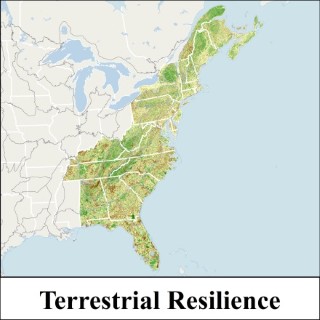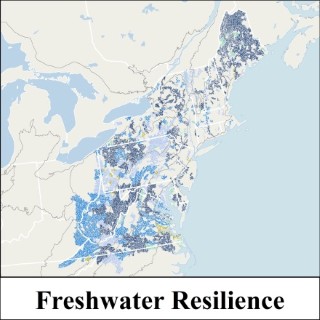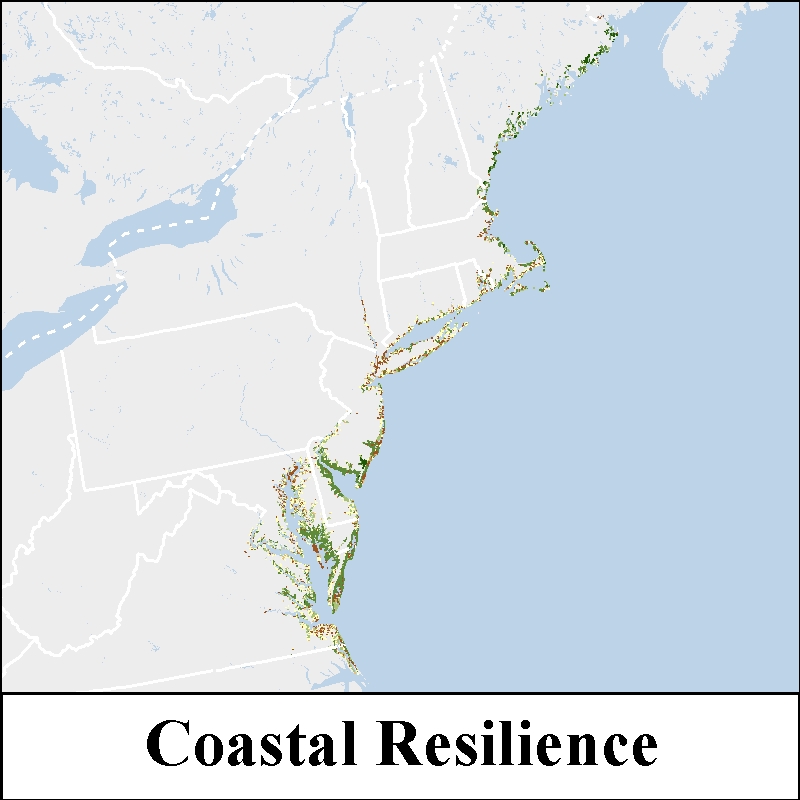Identifying climate-resilient lands and waters to sustain biological diversity
From the rugged mountains of the Northern Appalachians to the vast marshes of the Everglades, the diverse landscapes of the eastern US have shaped the lives of their inhabitants. Extensive forests, rivers, and bays provide food, clean water, and habitat for the people, plants, and animals that share the region. But the climate is changing, and to stay healthy, the natural world must also change.
Conserving Nature’s Stage
Many places are vulnerable to the degrading effects of climate change. However, the unique characteristics of certain landscapes ensure that some places will be more resilient than others to climate impacts. Thanks to their diverse topography, bedrock, and soil, these climate-resilient sites are more likely to sustain native plants, animals, and natural processes into the future .
Identifying Climate Resilient Sites
The Nature Conservancy, using sound science and comprehensive data, embarked on a project to map the locations of climate-resilient sites. Teams of scientists mapped the physical characteristics that promote natural resilience and scored every acre in project areas based on these characteristics. The results were combined into an index that identifies the places more likely to sustain diversity because they offer a wide range of micro-climate options within a connected area .
For more information click on a project below:



